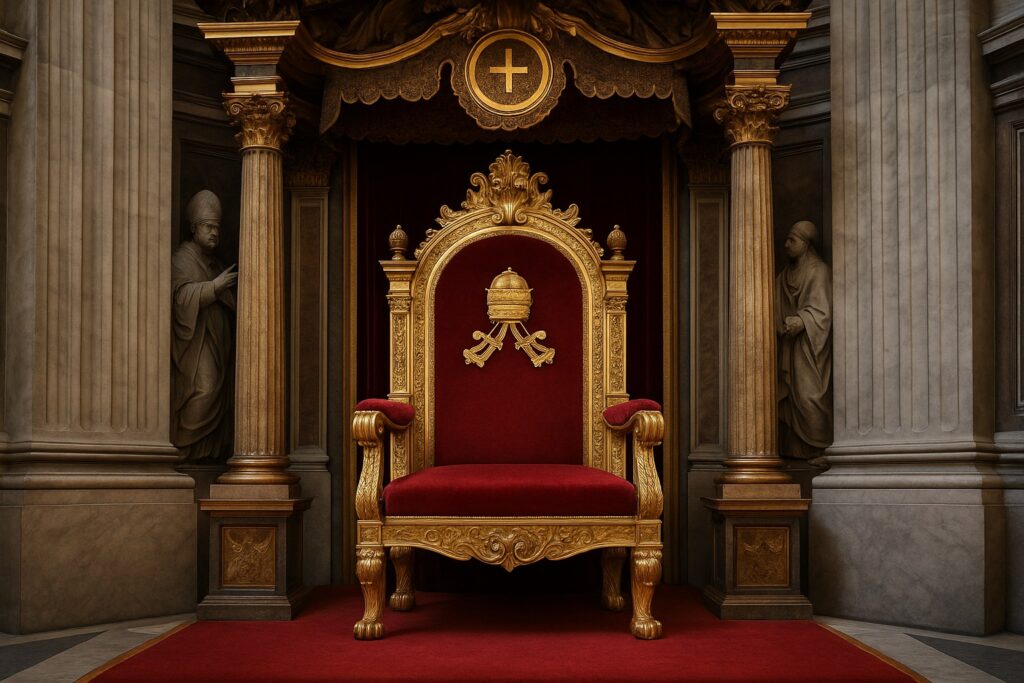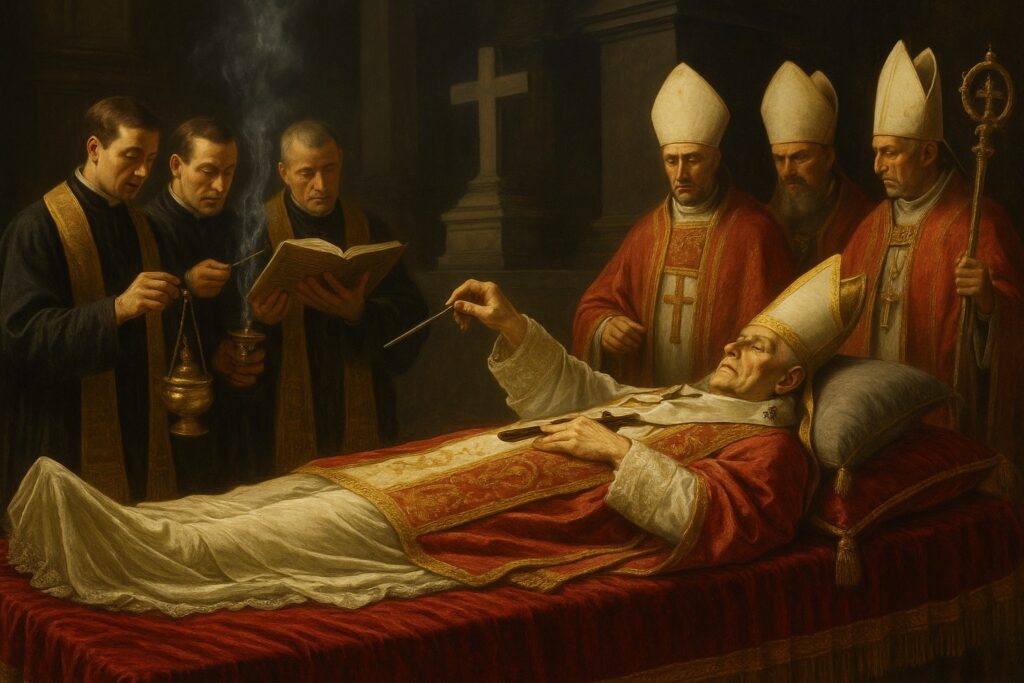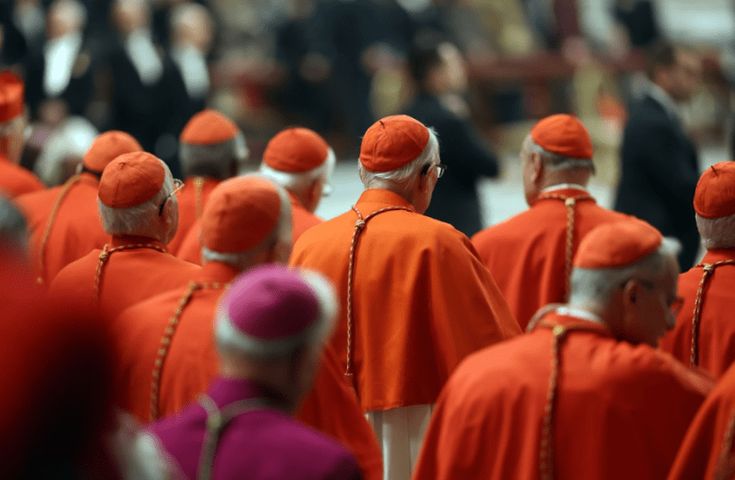“What happens after a pope dies?” is one of the most popular questions today. People are wondering how soon before a new pope takes the exalted office and how the successor is determined. If you are one of these, your curiosity is justified.
The recent death of Pope Francis, the 266th pope and leader of the Roman Catholic Church, has kicked off a sede vacante, the period from a pope’s death to the election of a new one. This period has been shrouded in mystery for centuries.
The death of Pope Francis has again rekindled interest in the papal succession process. But we are about to unravel this sacred tradition and find out how the new pope will emerge.
Pope Francis, whose real name is Jorge Mario Bergoglio, succeeded Pope Benedict XVI after the former’s resignation. But who will succeed the late pope?
The emergence of a new pope isn’t as straightforward as many would think. Due to the size of the Catholic Church, there are usually many qualified candidates to fill any empty papal seat. But the process involved has been a mystery to many, and understandably so.
The Vatican announced Pope Francis’ death on Monday, April 21, 2025, shortly after he passed on at 10:36 p.m. He was buried five days later in a ceremony that drew about 250,000 mourners, including hundreds of world leaders.
However, a new pope has not been announced as of this writing. Despite the abundance of worthy candidates, the emergence of a papal successor is entwined with centuries-old rituals and Catholic customs.
The Papal Seat Is Empty
On Tuesday, April 22, 2025, most of the world woke up to the sad news of the pope’s death. The spiritual leader of more than 1.4 billion Christians had passed on. The pontiff died at the age of 88 after a long-running battle with pneumonia and respiratory infection.

Pope Francis became pope on March 13th, 2013, and held the position for 12 years. His reign saw lots of advocacy for minority groups, including the LGBTQ+ community, and attempts at repairing the battered image of the catholic church after its numerous sexual abuse scandals.
Before Pope Francis, Pope John Paul II died in office in 2005 from kidney and heart failure. Pope Benedict XVI, who succeeded him and resigned from the office in 2013, also passed on. Pope Benedict XVI died in 2022 at the age of 95.
Following Pope Benedict’s death, Pope Francis amended some provisions of the papal burial rites. Many Vatican rituals have been amended over the years. However, the core of these ceremonies has remained unchanged and dates back centuries.
Papal Death Rituals: Ancient Traditions Unveiled
One of the first things the Vatican does after a pope dies is prepare an official announcement. As trivial as this exercise would seem, there are guidelines around it. But before an announcement, the death has to be officially confirmed.
The person saddled with this responsibility is the camerlengo or chamberlain. In addition to this role, the camerlengo is currently in charge of the administration and finances of the papal government. Cardinal Kevin Farrell, head of the Vatican’s laity office, is the camerlengo.
To certify the pope’s death, the camerlengo would have had to gently knock the pope’s head with a hammer, a centuries-old practice. While doing so, the camerlengo would say the pope’s baptismal name three times. If there is no answer, then the pope’s death is confirmed. However, this ritual has been discarded.

These days, the method of ascertaining the pope’s death is through the appropriate medical procedure. However, the camerlengo will still have to mention Pope Francis’ baptismal name — Jorge Mario Bergoglio three times.
Once his death has been confirmed, the bells will ring in St. Peter’s Square. Meanwhile, the camerlengo will proceed to seal all the apartments of the late pope with a traditional red ribbon. He will seal his office together with all the official documents.
Thereafter, a 9-day mourning period known as “novendiale” begins. During this time, the Vatican drew up a constitution called Universi Dominici Gregis, Latin for “The Shepherd of the Lord’s Whole Flock.” This document contains 30 pages.
In addition, there’s the Ordo Exsequiarum Romani Pontificis, or “Funeral Rites for a Roman Pontiff.” This is a larger document with over 400 pages. It contains all the music, liturgy, and prayers for the funeral.
The funeral rule mandates that the pope’s burial be done no earlier than 4 days after his death and no later than 6 days. The Vatican will also prepare the pope’s body for a procession through St. Peter’s Square and a public viewing ceremony. The casket’s lid will be lifted during this ceremony to display the pope’s embalmed body.
The dean of the College of Cardinals is responsible for the burial. Cardinal Giovanni Battiste Re currently holds this position. He will also lead the college in choosing the new pope.
The pope’s burial will occur on the open grounds of St. Peter’s Square. Traditionally, the pope’s body will be laid in three coffins of cypress, oak, and lead. This custom was instituted to ensure that the pope’s body doesn’t receive any air.
However, Pope Francis stopped the practice. Instead, he ruled that the pope’s body would now stay in just one coffin, a wooden coffin lined with zinc.
Pope Francis also didn’t want to be buried inside the Vatican. He mandated his burial at the Santa Maria Maggiore Basilica in Rome. This will make him the first pope to be buried outside the headquarters of the Catholic Church in the past 100 years. After Pope Leo XIII was laid to rest outside the Vatican in 1903, 91 popes have chosen to be buried in St. Peter’s Basilica.
The Mystery Behind the Fisherman’s Ring
The fisherman’s ring is another fascinating and mysterious aspect of papal tradition. After a pope’s death, the ring is removed from his fingers and destroyed by the camerlengo. This destruction is done in the presence of the College of Cardinals using a silver hammer.
However, this tradition ended after Pope Benedict XVI’s resignation in 2013. Instead of destroying it, the camerlengo defaced it by carving a cross on its surface. The same was done after Pope Francis’ death.
The fisherman’s ring, or “Anulus Piscatoris,” represents the pope’s authority. Its origin stems from the life of St. Peter, one of Jesus Christ’s disciples, who Catholics believe was the first pope.
Every fisherman’s ring has an image of St. Peter. In some of the rings, Peter holds keys representing “keys of the kingdom.” In other versions of the ring, Peter is pictured casting nets into the sea from a boat. Every pope wears this ring on the ring finger of their right hand.
Aside from those, the ring also serves as the pope’s official seal. The seal of the ring validates all papal briefs and even private letters. For hundreds of years, people began to kiss the ring as a demonstration of respect for the pope’s authority and office.
According to Mark 1:17, Jesus Christ mandated Peter to become a “fisher of men.” So, as Peter’s successors, every pope inherits this responsibility. The ring reminds every pope of this sacred but glorious task.
Gambling on the Next Pope
Like many other uncertain outcomes, the identity of the next pope has been an object of gambling. Interestingly, this practice isn’t a new one. As early as the 15th century. Documents about the 16th century provide proof of betting on the next pope.
The news spread at the time, leading to the then-pope Gregory XIV declaring sanctions in 1591 on anyone who bet on the next pope. The culprits were to be excommunicated by the church. The penalty remained for centuries till it was ended in 1918.
Although the Catholic Church still greatly disapproves of betting on the papal elections, it has continued and even assumed a more organized and sophisticated dimension. Today, major betting markets such as Polymarket have entertained millions of dollars of bets on the next pope. The platform has seen papal election bets of more than $6 million. There are several other betting platforms where people have staked funds on the duration of papal tenures and even papal names.
Mysteries of the Papal Conclave: What Happens Behind Closed Doors
After the pope’s burial, the Vatican proceeds to the most crucial aspect of papal change—the conclave. The papal conclave is the gathering of the College of Cardinals to find a new pope. The process for doing so is by election. According to the Vatican rules, this process must commence between 15 and 20 days after the sede vacante begins.

However, not all cardinals are qualified to stand for election. According to succession laws, only those under the age of 80 are eligible. The law only limits the electors to 120. However, ineligible cardinals are welcome to the pre-conclave meeting.
Yes, the cardinals do not jump straight to the election. First, they will meet to discuss the church’s priorities, assess its influence on the world, and discuss how it can improve in all areas. Thereafter, the conclave proper begins with a march of the electors into the Sistine Chapel.
Once in, they must take an oath and never reveal whatever transpires during the conclave. The cardinals are also banned from interacting with the outside world during the process. The Vatican also arranges to sweep the chapel for any bugs.
Afterward, the doors will be locked so that voting can begin. Each elector will write the name of their favored candidate on a piece of paper and fold it before submitting it.
A group of three will open the pieces of paper, read the names of the nominees aloud, and record the votes. If the votes don’t produce the required two-thirds to elect a pope, they take a break and return for another round of voting. The cardinals can vote up to four times per day.
After every indecisive vote, ballots are burned using chemicals. To announce that no decision has been made, the Vatican burns the ballots to produce black smoke that rises from the chapel stove and out through the chimney.
However, after a pope has been elected, the Vatican burns the ballots to produce white smoke instead. Thereafter, the master of liturgical ceremonies officially documents the decision. Also, the bells of St. Peter’s Basilica toll.
The new pope will also choose and declare his papal name. Soon after, the senior cardinal deacon (different from the dean) announces “Habemus Papam,” which is Latin for “We have a pope.”
The new pope will change his cardinal’s robe to a white cassock. Then, each cardinal will approach him one after the other to pledge their obedience to his leadership.
After that, the new pope appears on the balcony to show himself to the world and give his first papal speech. The crowd erupts with joy as they greet the latest leader of the world’s largest denomination of Christians.
On May 8th, 2025, the white smoke went up, and 69-year-old Robert Provost became the 267th and first American pope. He stepped on the balcony of St. Peter’s Basilica and adopted the name Leo XIV. History was once again made, and the cycle continues.

